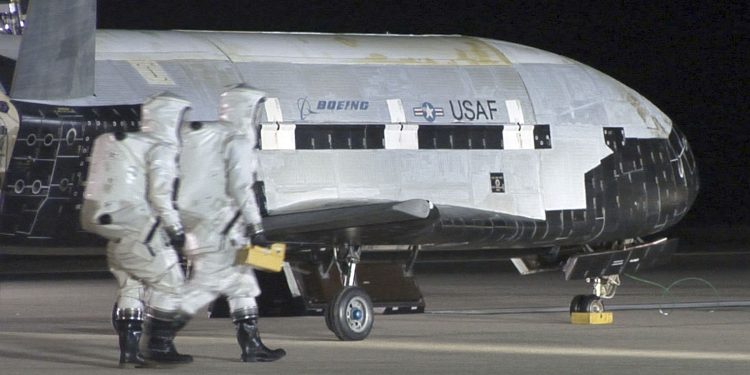The mysterious X-37B spaceplane, operated by the U.S. Space Force, is once again making headlines as it prepares to execute a highly anticipated maneuver that could reshape the future of space exploration. This experimental craft, designed by Boeing, is about to perform a complex technique known as “aerobraking,” which allows it to adjust its orbit using Earth’s atmosphere while conserving fuel. This mission is not only significant for its fuel efficiency but also because it opens up new possibilities for future space missions, positioning the X-37B as a vital asset in the U.S. space defense strategy.
Shift in Orbit
The X-37B’s latest operation, its seventh known mission, involves a series of precise movements that will allow the spacecraft to change its altitude by harnessing atmospheric drag. By using minimal fuel, the spaceplane can maintain its position while ensuring that any service module components are disposed of safely, following international space debris guidelines. What makes this mission particularly intriguing is that, while aerobraking is a well-established method, this marks the first time it has been applied to the X-37B.
As the spacecraft continues its mission in low Earth orbit, it will conduct further experiments, including testing Space Domain Awareness (SDA) technologies and studying the effects of radiation in space. However, the full scope of its mission remains classified, leaving room for speculation about its future role.
The X-37B: More Questions Than Answers
Despite its ongoing success, the X-37B remains an enigma. The spaceplane’s capabilities—such as its payload bay, which is comparable in size to a truck bed, and its service module adapter designed to carry additional equipment—continue to spark curiosity among experts. However, the U.S. Space Force has been tight-lipped about the specifics of the craft’s mission. Space Delta 9, the unit responsible for the X-37B, provides only broad details, emphasizing its role in “protecting and defending” space assets while deterring orbital threats.
What Could Be Next for the X-37B?
While much of the X-37B’s activities are cloaked in secrecy, one theory suggests that the spaceplane could eventually be tasked with intercepting hostile satellites or even neutralizing anti-satellite weapons. Early U.S. Space Force artwork depicting the X-37B in combat with enemy satellites lends credibility to this idea. Whether or not these missions will come to fruition remains to be seen, but the spaceplane’s mastery of techniques like aerobraking could prove crucial in future space confrontations.
As the X-37B continues to break new ground, its innovative approach to space exploration and defense will likely influence the development of future spacecraft. This mission, focused on refining fuel-efficient maneuvers like aerobraking, could pave the way for more advanced, strategically flexible space vehicles designed to secure the United States’ security in orbit.











